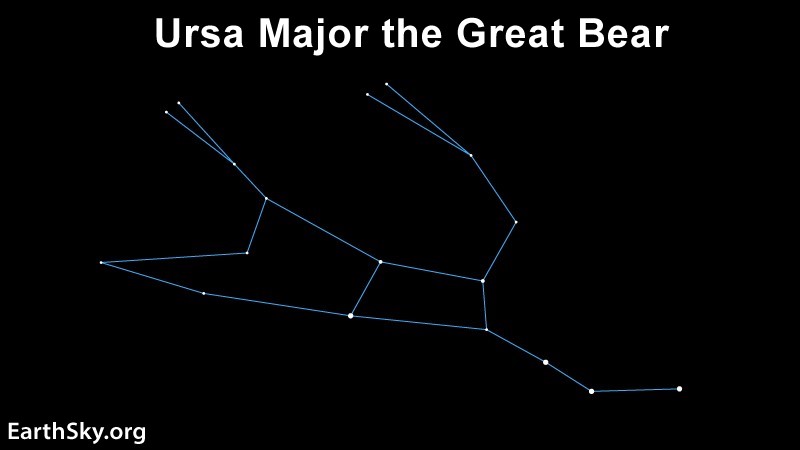
Ursa Major the Great Bear
Ursa Major the Great Bear contains an asterism, or collection of stars, that is a hallmark of Northern Hemisphere skies. The Big Dipper, or the Plow, is a portion of the Great Bear that represents the back half of the bear’s torso and its (oddly) long tail. Most everyone has seen the Big Dipper, but have you ever taken the time to trace out the entire form of the Great Bear? May nights are a wonderful time to try it.
For the Northern Hemisphere, Ursa Major passes overhead, or through the zenith, on May evenings. That means it’s too far north to see from most locations in the Southern Hemisphere, but it can still be observed from the southern tropics at a low height above the northern horizon. The Great Bear may look “upside down” in spring. Try lying back in a lawn chair and looking up at it.
Extending the Big Dipper to see the Great Bear
The familiar dipper shape becomes a bear when you include the stars in front of the bowl of the dipper. These stars make up the bear’s upper torso, head and front legs. The bear’s rear legs extend out from below the back part of the bear’s body.
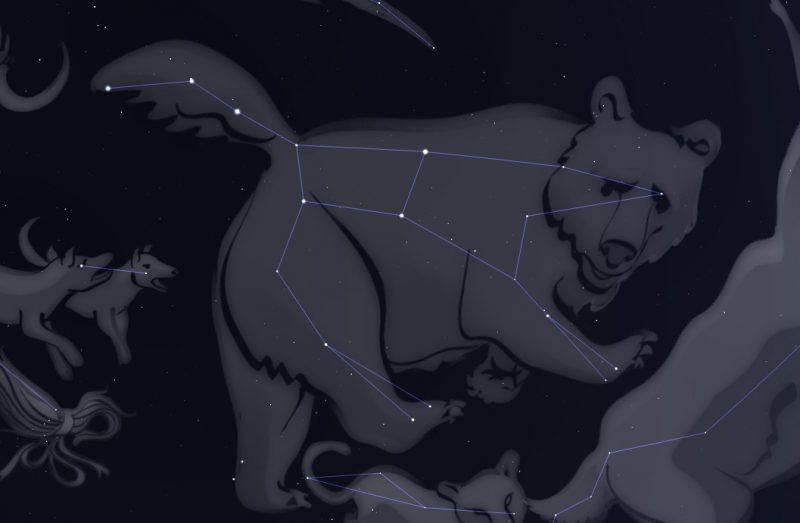
The stars of Ursa Major
Six of the seven stars of the Big Dipper are the brightest stars in Ursa Major. The dimmest of the seven stars is Megrez at magnitude 3.32. This star marks the juncture of the handle and bowl portion of the dipper. The next star up the handle, at magnitude 1.76, is the brightest star in Ursa Major: Alioth. The star at the very tip of the handle is magnitude 1.85 Alkaid, the third brightest in Ursa Major.
In between these handle stars, at the bend of the handle, is a magnitude 2.23 double star, Mizar and Alcor. The ability to split these two stars (see each of them individually without optical aid) is a test of eyesight for the very near sighted.
Moving back to the bowl of the Big Dipper, across the top of the bowl and to the star farther from the handle, is magnitude 1.81 Dubhe. Below this star, diagonal from the handle, is magnitude 2.34 Merak. These two are the pointer stars used to find the Little Dipper, or Ursa Minor. Then, in the last corner of the bowl where the rear legs extend downward, is magnitude 2.41 Phecda.
One curious star, or pair of stars, in Ursa Major is M40. M40 is the only double star in the Messier Catalogue. The 8.4-magnitude pair is next to the star Megrez.
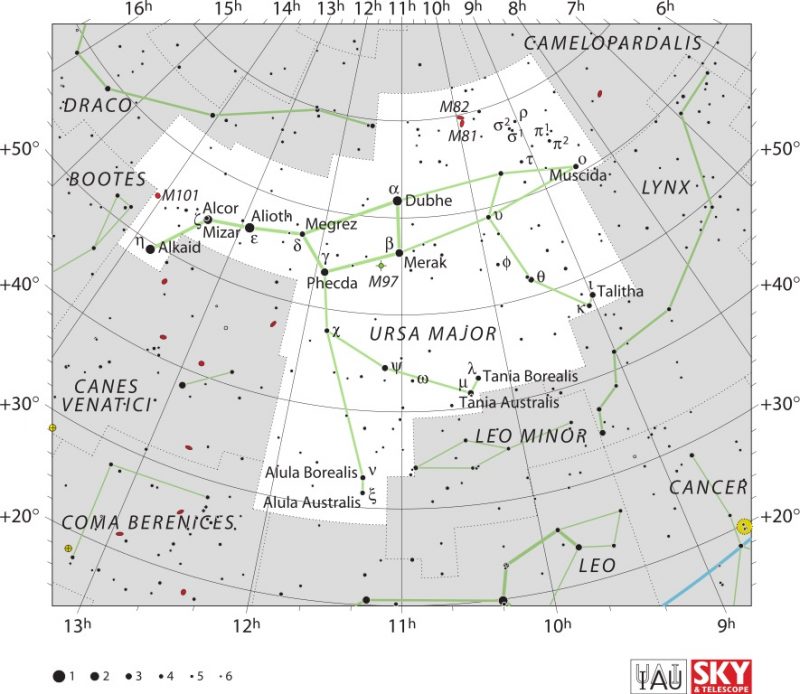
Using Ursa Major’s stars to find other constellations
Besides using Dubhe and Merak to find Ursa Minor, you can use the tail of the bear to arc to Arcturus, the brightest star in the constellation Boötes. Next, you can spike to Spica, the brightest star in Virgo.
Then, take the two bowl stars nearest the handle of the Big Dipper, Megrez and Phecda, and draw a line below the bear to find Regulus, the brightest star in Leo. So, starting at the Big Dipper asterism in Ursa Major, you have now found your way to four other constellations.

An owl in the Great Bear?
A notable planetary nebula, M97 or the Owl Nebula, lies in Ursa Major a little to the east of Merak. The 9.9-magnitude nebula lies beside another Messier object, M108, a 10th-magnitude spiral galaxy. Train your telescope on this area to get two for the price of one.
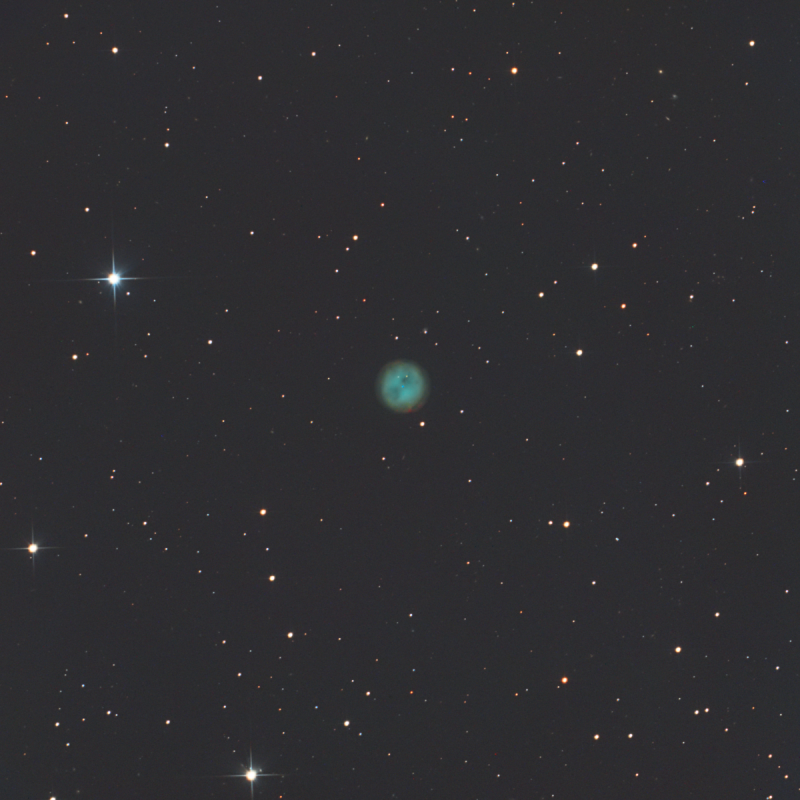
Some galaxies of Ursa Major
Another “two-for” can be found above the Great Bear’s head. The spiral galaxies M81 and M82 keep close quarters here. M81 has the nickname of Bode’s Galaxy, and M82 has the nickname of the Cigar Galaxy. M81 is a fairly bright magnitude 6.9, while M82 is magnitude 8.4.
As a truly difficult test of eyesight, try to spot M81 without optical aid. Few experienced observers have ever been able to do so. You need pristine, dark skies. The Andromeda Galaxy, M31, is 2.6 million light-years away and is occasionally seen without optical aid at magnitude 3.4. M81 lies more than four times that distance, at 11 million light-years distant.
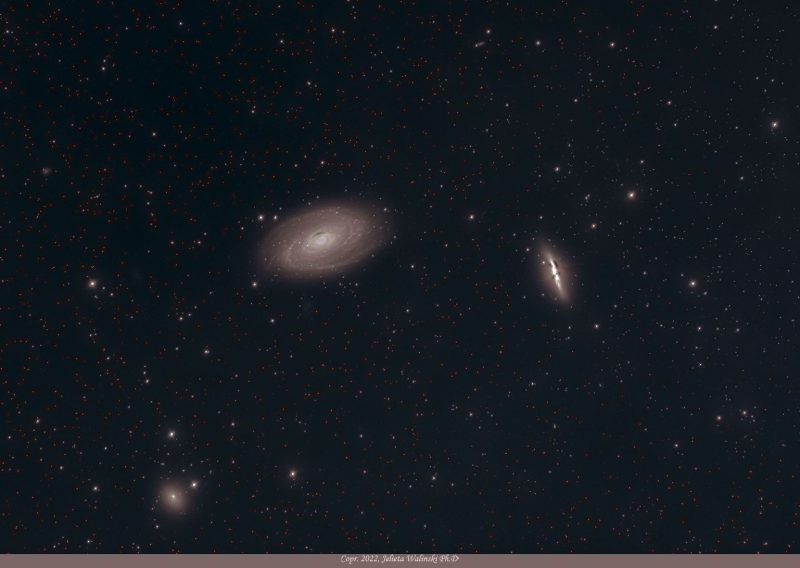
Two other decent galaxies round out the observing highlights in Ursa Major. First, just off the star Phecda, is M109. M109 is a magnitude 9.8 barred spiral galaxy. The other galaxy, M101, is a gorgeous magnitude 7.9 spiral nicknamed the Pinwheel.
Bottom line: Ursa Major the Great Bear is a constellation in Northern Hemisphere skies that’s home to the asterism of the Big Dipper.











